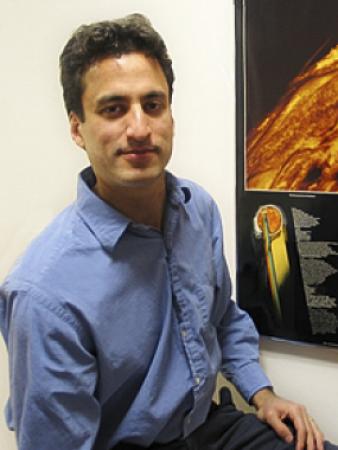
Prof. Ben Chandran
Ben Chandran
University of New Hampshire
Friday, April 20, 2018
3:00pm
Abstract: Turbulence likely plays an important role in generating the solar wind, and spacecraft measurements indicate that solar-wind turbulence is largely non-compressive and Alfven-wave-like. Although compressive fluctuations are sub-dominant, Alfven waves in the solar wind couple to compressive slow magnetosonic waves (“slow waves'') via the parametric-decay instability. In this instability, an outward-propagating Alfven wave decays into an outward-propagating slow wave and an inward-propagating Alfven wave. In this talk, I will describe a weak-turbulence calculation of the nonlinear evolution of the parametric instability in the solar wind at wavelengths much greater than the ion inertial length under the assumption that slow waves, once generated, are rapidly damped. I'll show that the parametric instability leads to an inverse cascade of Alfven-wave quanta and present several exact solutions to the wave kinetic equations. I will also present a numerical solution to the wave kinetic equations for the solar-wind-relevant case in which most of the Alfven waves initially propagate away from the Sun in the plasma rest frame. In this case, the outward-propagating Alfven waves evolve toward a 1/f frequency spectrum that shows promising agreement with spacecraft measurements of interplanetary turbulence in the fast solar wind. I will also present predictions that will be tested by NASA's upcoming Solar Probe Plus mission, which will travel much closer to the Sun than any previous spacecraft.
Bio: Professor Chandran received his Ph.D. from Princeton University in 1997. His research is in the areas of theoretical plasma physics and theoretical astrophysics, particularly problems at the interface between these two fields. His main interests are plasma turbulence, the role of turbulence in the solar corona and other astrophysical settings, and the evolution of baryonic matter in clusters of galaxies. He has also worked on cosmic-ray propagation, particle acceleration at shocks, and the origin of astrophysical magnetic fields. His research program is supported by grants from NASA, NSF, and DOE, and offers research opportunities for undergraduates, graduate students, and postdoctoral scholars